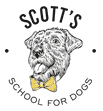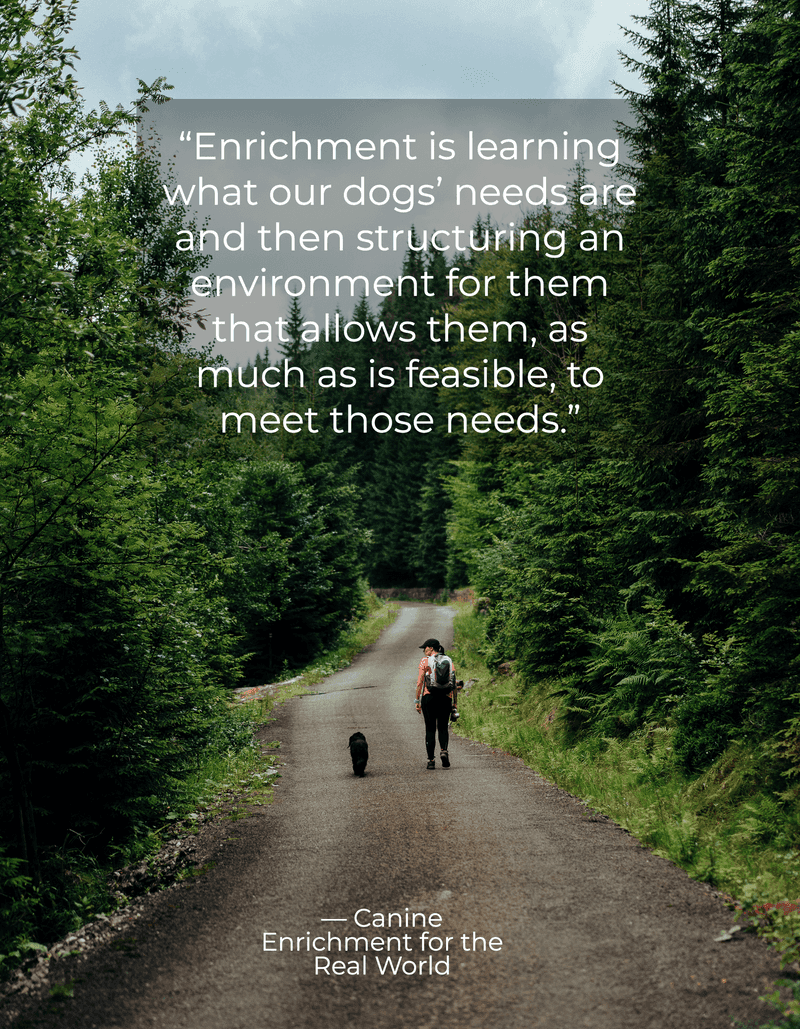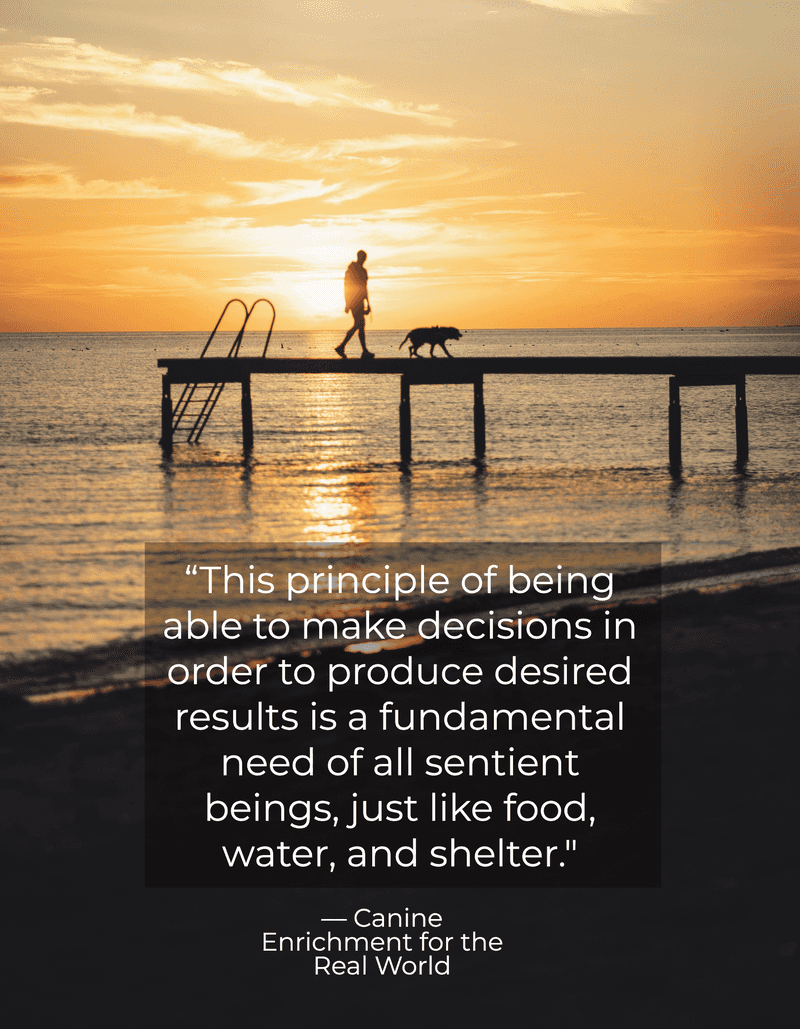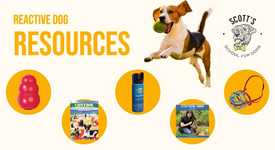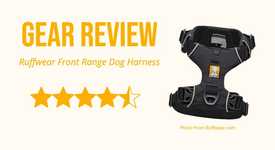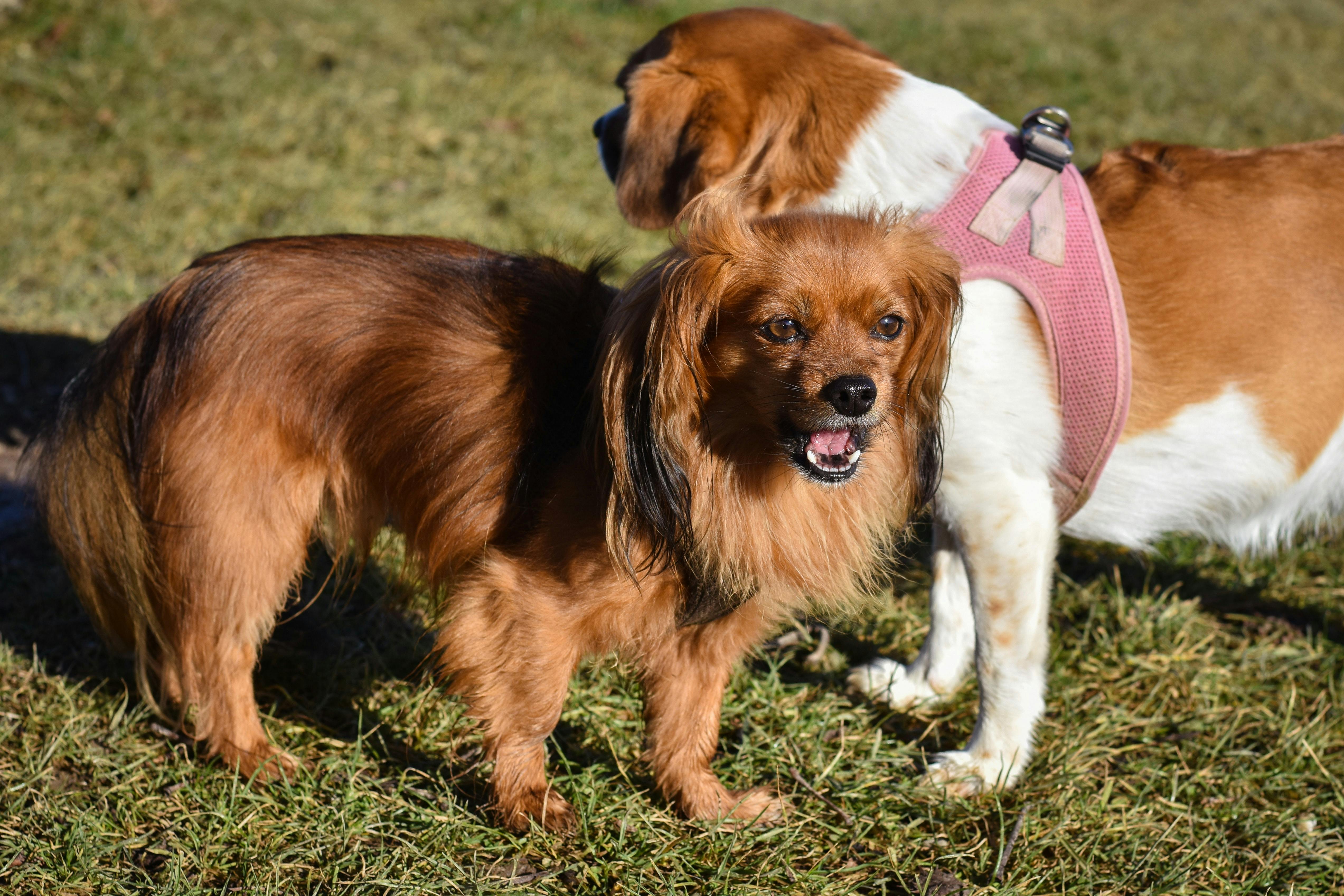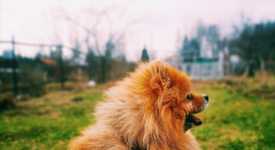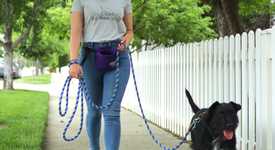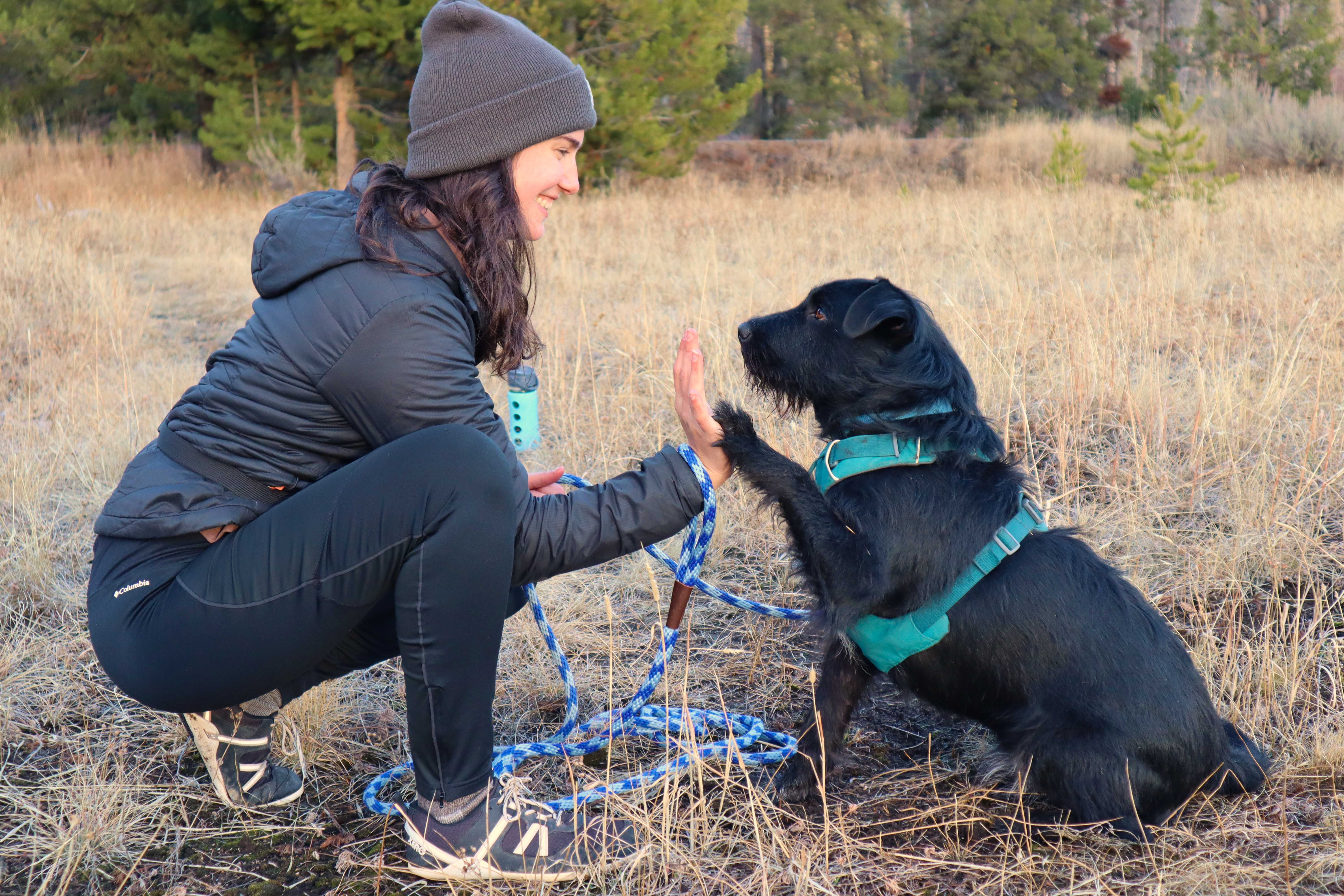Why Every Dog Owner Should Read Canine Enrichment for the Real World
Reviews | By: Taylor Wyllie, KPA CTP | Feb 01, 2023

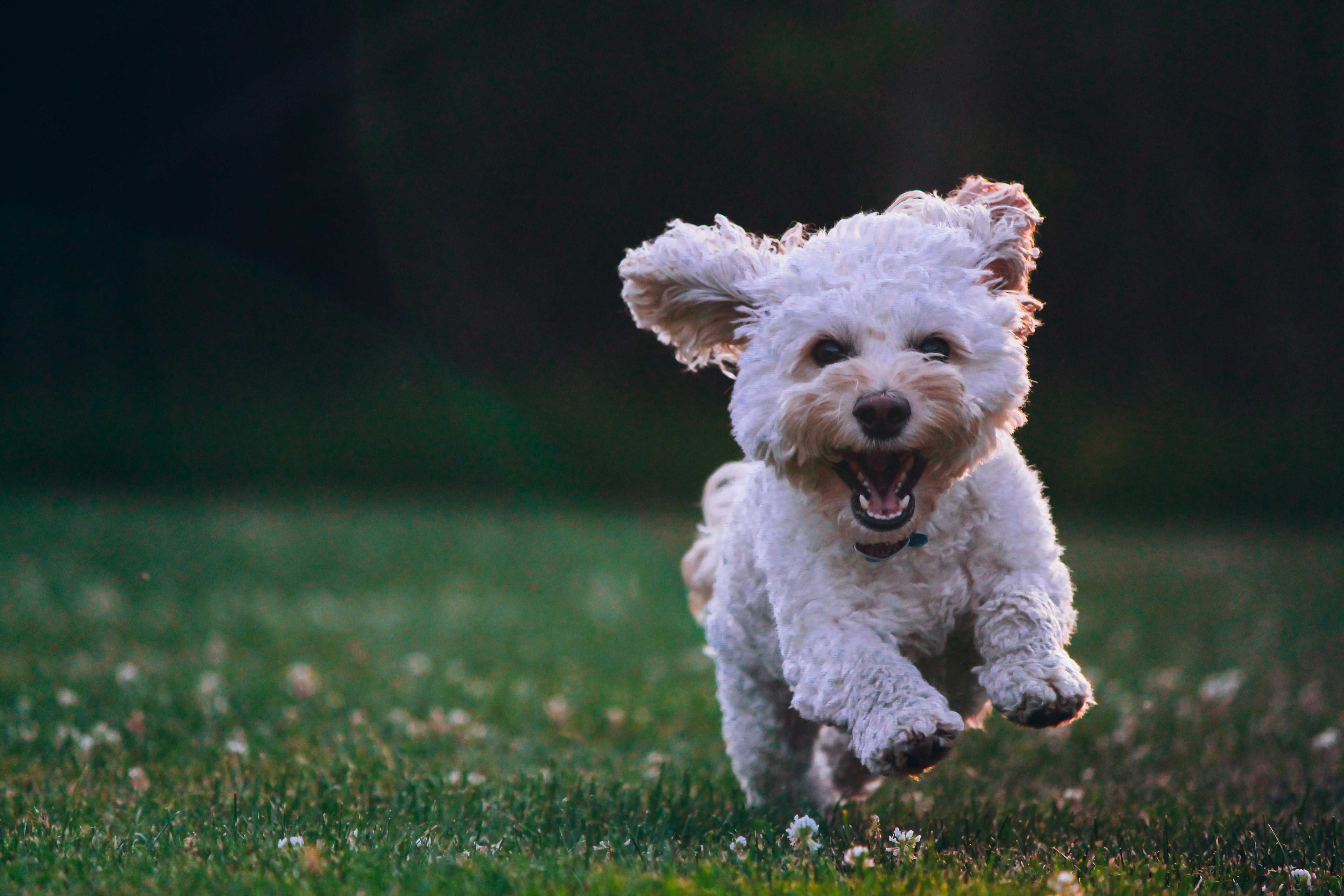
Unlock 10 Expert Puppy Training Tips!
Sign up with your email and receive a free video guide to transform your puppy into a well-behaved companion
Book Review: Canine Enrichment for the Real World by Allie Bender (CDBC) and Emily Strong (CDBC)
Disclosure: some of the links in this blog are affiliate links. We receive a small commission for purchases made through these links at no extra cost to you. This helps support us and allows us to continue to put out free content to help you and your pup. Thanks for your support!
Enrichment is a term that’s thrown out a lot in the dog world these days.
You may have heard your neighbor talking about stuffing a kong as a form of enrichment for her Bichon. Or maybe you stumbled upon a dog puzzle in your local pet store. Or maybe your cousin told you about her golden Retriever’s favorite snuffle mat.
So, if you’re anything like I was, you may be wondering why you should read an entire book about the subject. After all, giving your dog a stuffed kong seems pretty straightforward.
The name—Canine Enrichment for the Real World: Making It a Part of Your Dog’s Daily Life—is the biggest weakness of this incredibly insightful and informative book. A book that every single dog owner should read, highlight, and return to again and again.
Enrichment is far more than a stuffed kong, a way to get your dog to stop annoying you for a little while, or a way to condition them to love their crate (although those are wonderful side effects).
Enrichment, as outlined in the book, is about meeting the basic needs of our dogs, which can help with:
- Rehabilitating behavioral challenges
- Mitigating unwanted behaviors like excessive barking or jumping
- Raising resilient, mentally happy companions
- Creating a peaceful, happy home for both humans and dogs alike
This book walks you through exactly what those needs are and how to meet them. It takes a deep dive into various elements of enrichment, including sensory stimulation, safety, security, foraging, the freedom to perform natural behaviors, social needs, physical exercise, and calming behaviors.
Whether you haven't had a dog before or you're a dog professional, you'll likely learn something new when you read this book.
Best of all, this book has been meticulously researched with peer-reviewed studies to back up most of its claims. If a specific claim comes from the authors' own experiences as dog trainers and behavior consultants, they clearly label it. They are also sure to point out where further research would be beneficial.
The book is split into three parts and corresponding chapters:
The Concept of Enrichment
- Ch 1: Enrichment Then and Now
- Ch 2: The Elements of Enrichment
- Ch 3: Agency
The Nuts & Bolts of Enrichment
- Ch 4: Physical Excercise
- Ch 5: Safety and Security
- Ch 6: Instinctual Behaviors
- Ch 7: Foraging
- Ch 8: Social Interactions
- Ch 9: Mental Stimulation
- Ch 10: Calming Enrichment
- Ch 12: Providing The Right Environment
Practical Suggestions for Creating and Implementing Your Enrichment Plan
- Ch 13: The Human Element
- Ch 14: Work Smarter, Not Harder
- Ch 15: Practical Enrichment for Special Needs Dogs
- Ch 16: Practical Enrichment in Shelters and Rescues
- Ch 17: Putting it All Together
At the end of the book, there's a resources section that lists all of the resources the authors mentioned throughout the book.
Enrichment Concepts
The first two sections of the book may completely change the way you see your dog.
For example, the concept of agency isn't one that's often discussed or even thought of in the dog community. But Bender and Strong make a compelling case for why allowing our dogs' agency in their lives is so important—and the problems that can arise when they're given none.
Oftentimes when people try to train a dog who has been in a state of learned helplessness, they perceive the dog as being stupid or stubborn when in reality we just need to teach them how to learn again. (p. 31)
They also bust dog myths like the alpha-wolf theory or the idea that all dogs need dog friends. In reality, dogs have very flexible social structures and some dogs are far more "introverted" than others.
Enrichment in the Real World
The last section of the book is dedicated to helping you find ways to include enrichment in your life that work for both you and your pup. This section—and some of the chapters in the middle—help you recognize where you're succeeding and where you could spend a little more time. You'll likely find that you are already doing a great job in many ways!
And they recognize that you're a human with human limitations. As they say, “...we need to be able to provide for our dogs’ needs without turning it into a full-time job that runs our whole life” (p. 81).
So, they give suggestions on how to make the stuff you already have to do—like feed your dog dinner—into enrichment opportunities.
They also recognize the most common difficulties people have when adding enrichment into their dogs’ life—like working long hours or dealing with chronic illnesses—and directly speak to how to make it work.
...It’s simply a matter of working smarter, not harder, and figuring out how to provide the most sustainable and effective enrichment possible in your environment (p. 167).
The book finishes with a challenge to make your own enrichment plan based on an example with one of the authors' own dogs. I imagine that, by the time you reach this point in the book, you'll be so sold on enrichment that you'll be itching to make this plan and put it into place.
At least, I was.
